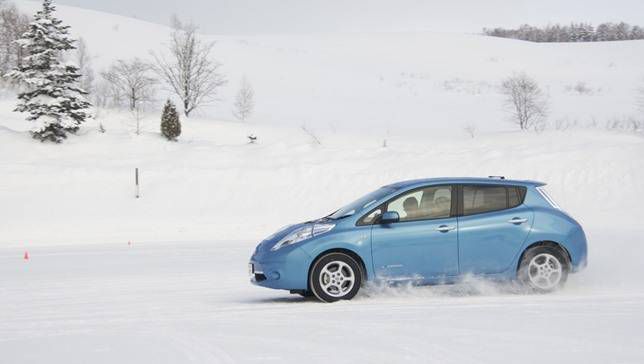
EVs vs Old Man Winter

Are you interested in making the switch to driving electric, but worried an electric vehicle (EV) won’t function well in Rochester’s infamous winters? Have you heard that EVs simply can’t handle extreme cold? The bottom line is that, like gasoline-powered cars, EVs lose some of their efficiency in extreme cold, but the loss of efficiency experienced by EVs in extreme cold makes no practical difference for everyday transportation purposes. Plus, EVs are still more efficient than gasoline-powered cars in extreme cold.
 The first thing to consider when thinking about cars in the winter is getting them started. EVs leave gasoline-powered cars in the dust in this category. EVs are consistently easier to start in extreme cold than gasoline-powered cars. It’s a good idea to program your EV to heat up its battery before you typically leave the house, but this is more an issue of range and efficiency than of getting the car to start.
The first thing to consider when thinking about cars in the winter is getting them started. EVs leave gasoline-powered cars in the dust in this category. EVs are consistently easier to start in extreme cold than gasoline-powered cars. It’s a good idea to program your EV to heat up its battery before you typically leave the house, but this is more an issue of range and efficiency than of getting the car to start.
Next up, how do EVs handle icy roads? As with gasoline-powered cars, this will vary from car to car. A dual motor Tesla Model X will obviously handle icy conditions better than a Nissan LEAF. However, the considerable weight of the battery pack in all EVs does tend to give them an advantage in traction on icy surfaces. Ultimately, traction on ice in EVs depends on the same factors as in a gasoline-powered car. The more wheels that receive power and the more weight over the wheels, the better the traction on ice. An EV with a large battery pack and all-wheel drive will perform as well on icy roads as any car on the road.
What about range? Perhaps the most common worry about EVs in the cold is the impact that extreme cold has on battery performance and range. Some point out that batteries function less efficiently in extreme cold and that the increased energy draw needed to power the heater has a considerable impact on overall range. First, it’s important to point out that the way that gasoline-powered vehicles avoid expending extra energy to heat the inside of the car in the winter is by utilizing excess engine heat. However, this excess engine heat is produced whether it’s January or July and this is the primary reason why gasoline engines are so inefficient.
Researchers at the Idaho National Laboratory found that EVs driven in Chicago in the winter experienced decreases in range of 26 to 30 percent. Taking a 2015 Nissan LEAF as an example, this means a range of about 60 miles instead of 81. For a Chevy Bolt EV, this would mean a range of approximately 167 miles instead of 238. Whether the reduction in range caused by extreme cold will impact you will depend primarily on the normal range of your car and whether you have access to charging at work. Almost 90 percent of adults in the US commute less than 30 miles one-way to work, so a Bolt owner will almost certainly experience no practical difference whether they are driving their car in sun or snow. However, a LEAF owner might need to depend on workplace charging in winter months.
The takeaway lesson about EVs in extreme cold is that if you don’t want to have to think about planning your day differently when temperatures begin to drop, you should probably buy an EV with a normal range of at least 150 miles. With 150 miles of range, it is very unlikely you’ll need to charge during a normal day, no matter how furiously Old Man Winter blows. The great news is that manufacturers are increasing the range of their EVs every year, so you soon won’t need to think differently about driving electric in the winter at all!